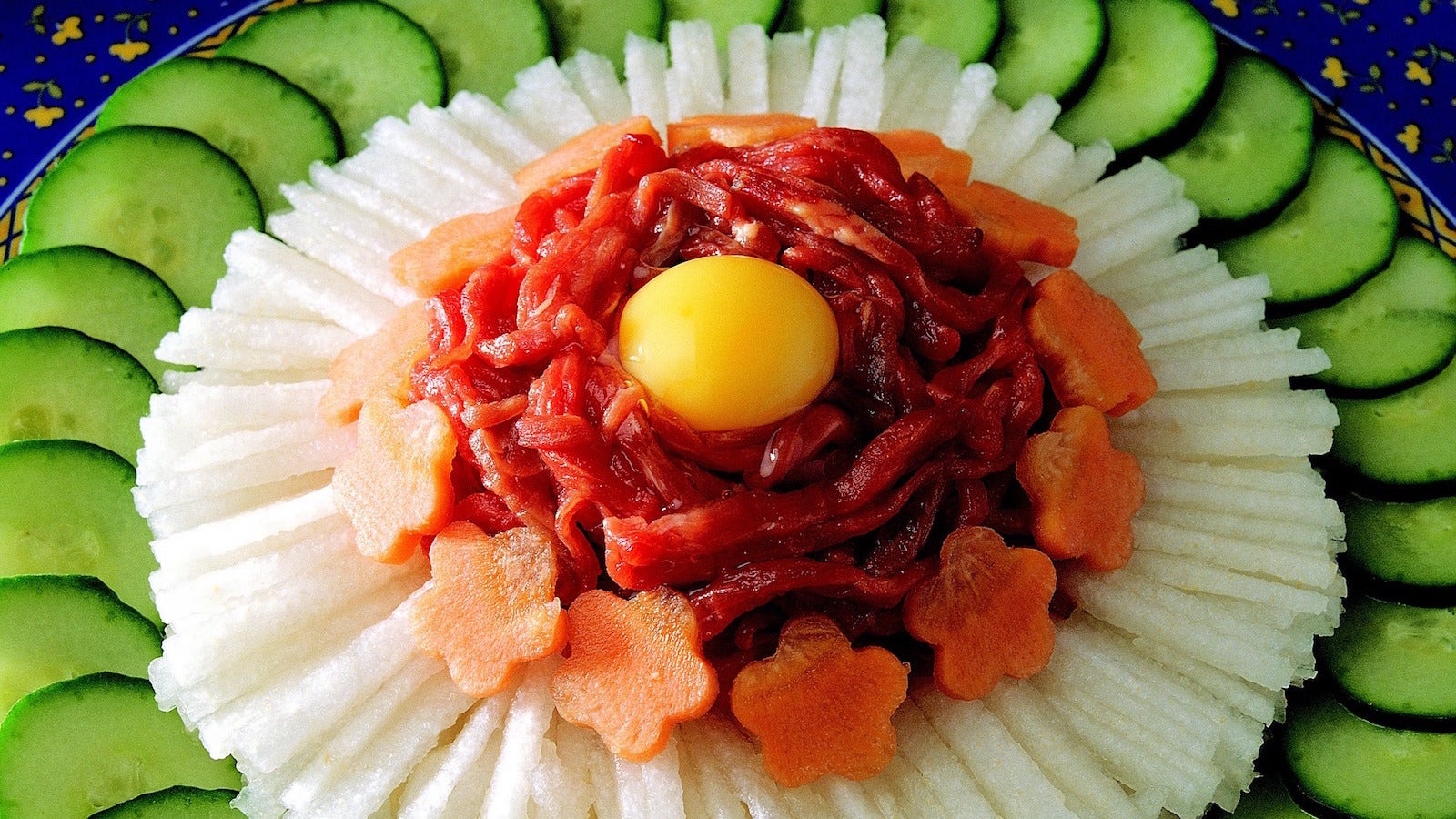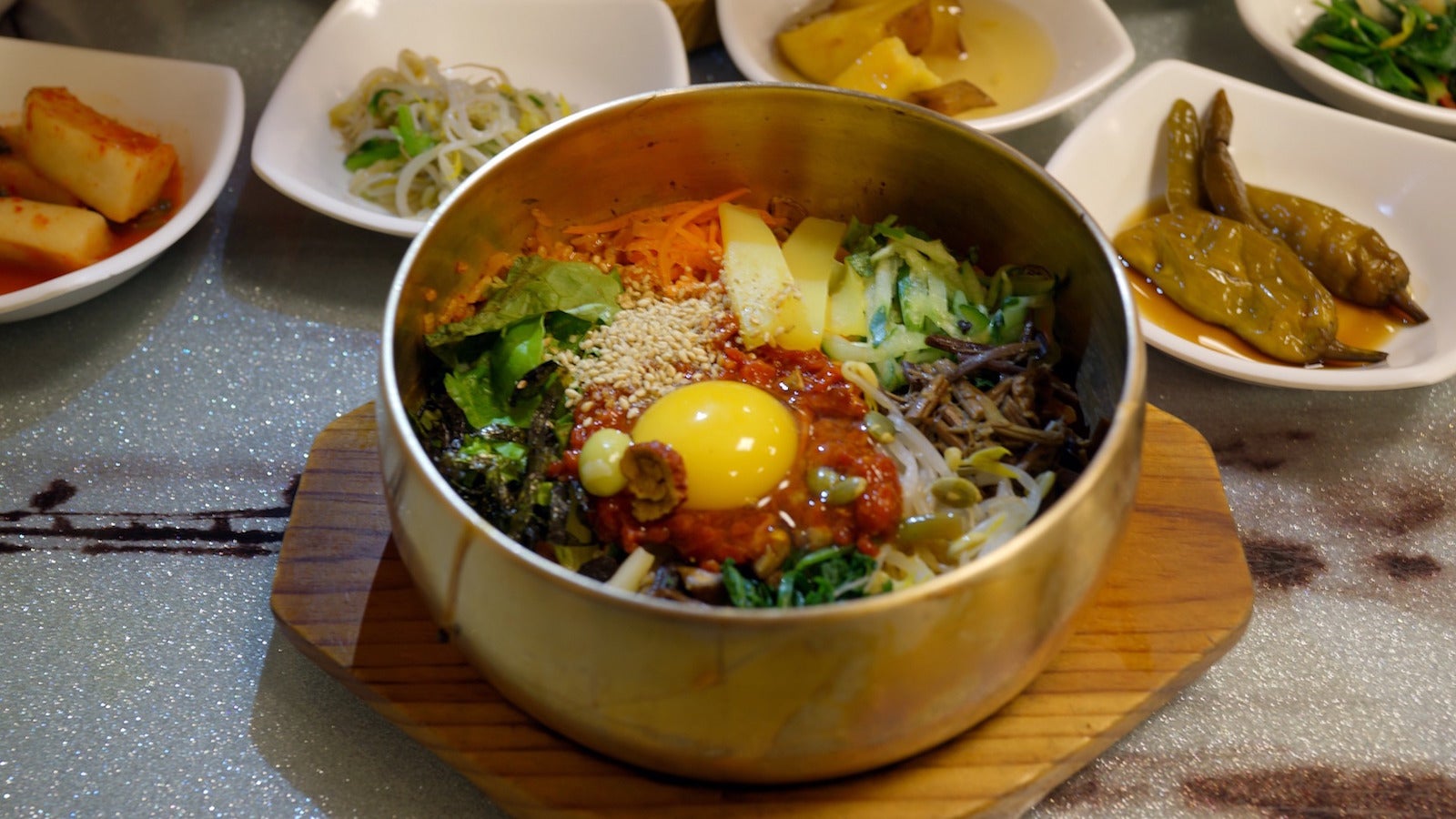When it comes to Korean food, there is no such thing as cultural appropriation
A few weeks ago, I shared a recipe for a Korean stew with an American friend. It was a family favorite: Growing up, my brother and I would huddle around the steaming pot, ladling spoonfuls of the pork-fat-thickened red broth into our bowls of white rice. Instead of thanking me for passing on my mom’s know-how, my friend began questioning its methods. “Why do you boil everything together so they get mushy?” she said. “I’d rather brown the bacon and potatoes separately, so they stay crispy.”


A few weeks ago, I shared a recipe for a Korean stew with an American friend. It was a family favorite: Growing up, my brother and I would huddle around the steaming pot, ladling spoonfuls of the pork-fat-thickened red broth into our bowls of white rice. Instead of thanking me for passing on my mom’s know-how, my friend began questioning its methods. “Why do you boil everything together so they get mushy?” she said. “I’d rather brown the bacon and potatoes separately, so they stay crispy.”
“Blasphemy!” I wanted to snap. “That’s not how it’s done! How dare you question mom’s recipe?”
But after considering her suggestions, I wondered if her way would taste better than the traditional way. Who doesn’t like crispy pork? Did I really prefer everything mushy, or was that merely what I was brought up eating? One version wasn’t inherently better than the other just because it was “authentic”—it was just different.

When it comes to grub, I’m not worried about appropriation—only appreciation. As a Korean-American, I am proud to see my once-obscure culinary culture become part of the mainstream. After all, my heritage is not so fragile that it will be damaged by someone photographing their bibimbap with the wrong cutlery. Koreans have overcome dictatorships and poverty, so I’m sure we can survive Instagram pictures. I believe people should be able to eat or serve whatever pleases us, without worrying about whether we are the correct ethnicity. Purity can only exist in a vacuum of cultural interaction, and we all benefit when cultures meld.
There was a period in which no white person erroneously styled a bowl of ddukbokki, ever, because no one outside of Korean enclaves knew what it was or cared. Few of us Koreans would choose to revert to that time when our culture was unknown and untouched. I now see the proliferation—and inevitable transformation—of my traditional food and culture as a mark of pride. For a lot of minority migrant communities, this assimilation wasn’t easy.
When I was in fourth grade, our landlady complained about the smells wafting up from our apartment. It was doenjang, a traditional Korean dish made of a fermented mush of soybeans that looks slightly like dung and smells like miso paste that’s been left inside a wet shoe for a week. I can’t imagine life without it, but the outside world wasn’t kind to it. My mom, usually such a strong and resilient woman, broke down and wept from a combination of frustration and shame.
After that, my mom learned a lesson and began to pack ham sandwiches and Lunchables for me to take to school. Desperate for acceptance, I went along with the change. As one of the only non-white students at my school, I already stuck out. My imperfect English may have outed me as an outsider, but my newly Westernized lunch was a way to signal I was worthy of inclusion.

In the 1990s, most of my peers only had the faintest idea of what Korea was, let alone anything about Korean food. The unavailability of Korean ingredients in average American grocery stores and the nonexistent profile of our dishes in the cultural lexicon were a constant reminder that my country and my people were invisible. So it didn’t seem fair to me that other Asian countries weren’t lopped with the same anonymity; many people expressed fascination with Japanese society, and of course every family had a favorite Chinese restaurant. My peers also had no trouble identifying which continent these two countries belonged to. In this way, I realized that popular food gave my school-aged friends a context for envisioning a foreign country. And no bulgogi meant no reason to understand where it came from.
Fast forward 20 years to 2017, and Korean food is hip. You could walk into a Whole Foods and find not one, but several brands of gochujang. Glossy foodie magazines fawn over Korean barbecue. Urban foodies flock to Korean fried-chicken joints and line up outside food trucks serving up bulgogi rice bowls. My white friends even brag to me about weekends spent pickling their own kimchi. “It’s not that hard, you know,” they tell me, like I really don’t know.
What changed? In the past decade, my home nation went from being an obscure country to a major player on the international stage. Thanks to rapid industrial development, South Korea has become the 11th-largest economy in the world. In addition to the global success of firms like Samsung and Hyundai, our athletes and pop stars have become international icons. (Psy, anyone?)

And we are not alone. For example, Jewish Americans have increased interest in their traditional meals—and with it, a greater awareness of their religion. Popular media exhorts us all to braid the perfect loaf of challah and be creative with latke toppings, and a lox bagel is now as common a lunch option as a bowl of bibimbap. Traditionalists may complain that Judaism has become more homogenized and diluted—but in exchange, American culture has become more Jewish.
And it continues: injera eateries, dosa food carts, sambal samplers and a new generation of foodies correctly pronouncing phở. Is this appropriation, or just a greater understanding?
Authenticity is a story that evolves. Some criticize the casual manner with which Americans consume and style non-Western foods, even going as far as calling it cultural appropriation. They argue, “When people don’t take the time to educate themselves about the cultures associated with a given food, they wind up perpetuating cultural stereotypes and misrepresentations.” This statement begs the question of what constitutes correct representation: Who owns the claim to authenticity?
How we cook and eat is always a dynamic response to our environment. Despite being Korean, I do not “own” Korean food. No one does. The way I cook in Southern California is different from the way my grandmother cooks in a rural Korean village, and within Korea itself there are many different variations.
To be sure, it can be unnerving seeing others present something dear to your heart in an unfamiliar way. I may have at first balked when my white friend wanted to modify my family’s regional variations that makes foodscapes distinct from province to province, but that is her prerogative. By the same token, I do not ask for an Italian’s approval when I make pizza at home (and sometimes I even add creative touches, like kimchi).
This occasional discomfort and awkwardness can be considered the growing pains of any pluralistic society. More minority groups are becoming visible and normalized as their food earns visibility and acceptance in the collective culture. How could that be a bad thing?
So, go ahead and put kimchi on your mac and cheese. My grandmother won’t mind.